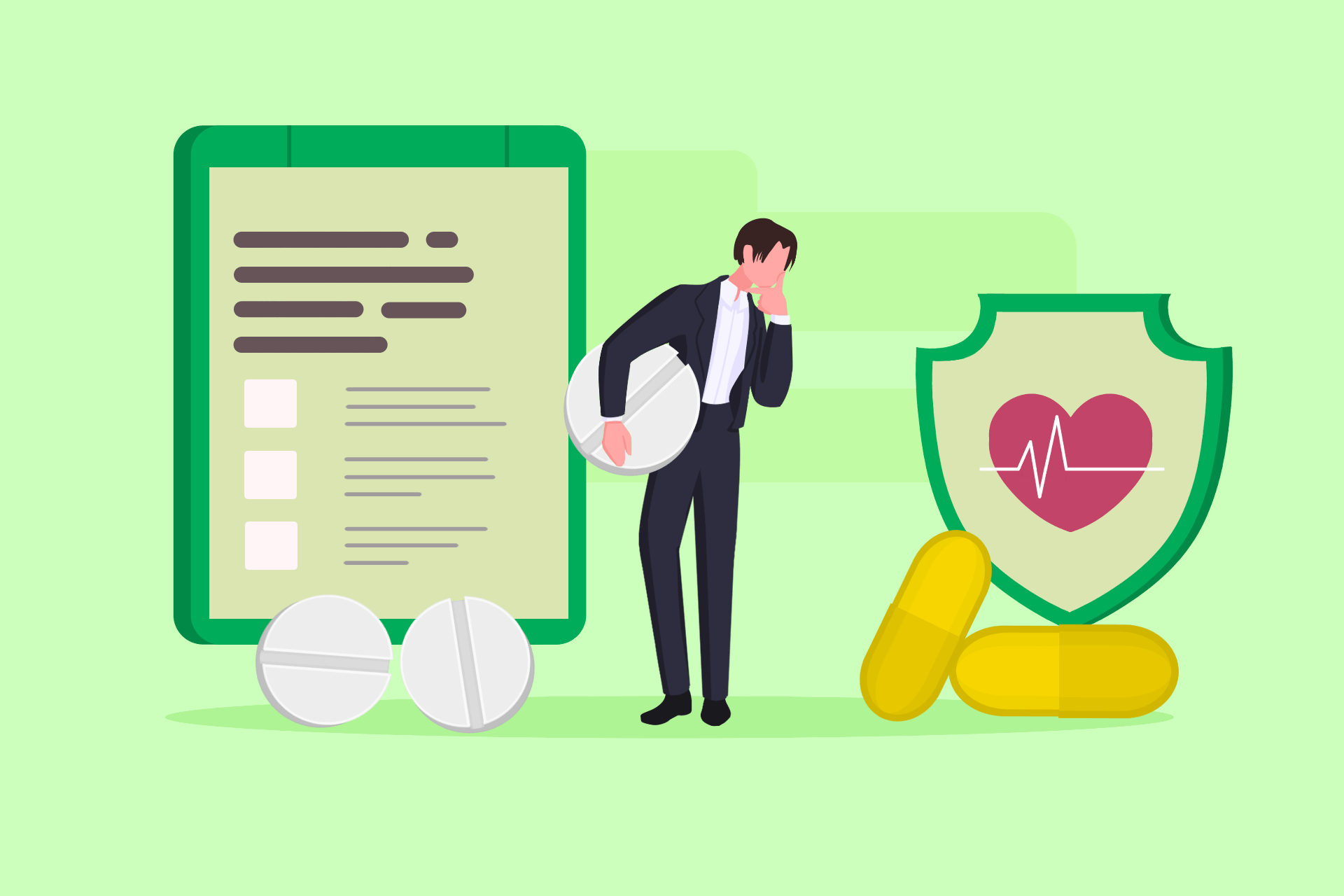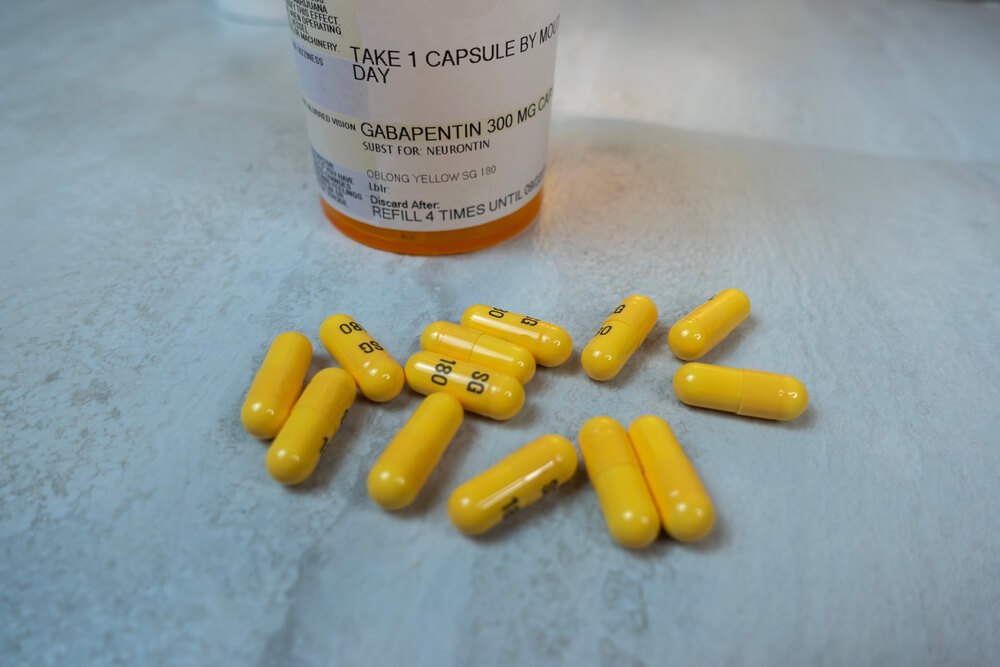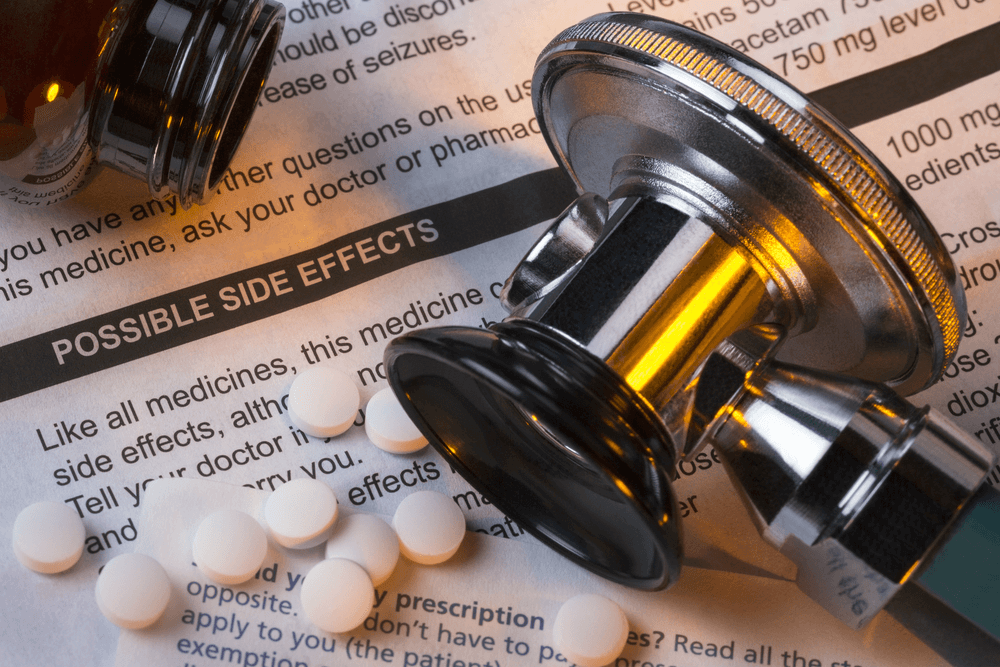Modafinil and gabapentin are two pharmaceuticals that have garnered significant attention in the medical community and beyond, each for different reasons. Often hailed as a “smart drug,” modafinil is widely known for its cognitive-ameliorating properties and is frequently used by healthy individuals to achieve an edge. On the other hand, gabapentin is a medication commonly prescribed for treating nerve pain and seizures, offering relief to those suffering from chronic pain conditions and neurological disorders.
But can you take both drugs? What happens when these two drugs are used together? Could the combo offer benefits in treating a health condition, or does it come with risks that outweigh the potential benefits? This guide answers these questions by providing a thorough analysis of both drugs, their intended uses, and the implications of taking them concurrently to help you understand whether this mix is right for you. Let’s dive in.
What Is Modafinil?
Modafinil was first developed in the 1970s by French neuroscientists to treat narcolepsy. It received its first approval from the U.S. Food and Drug Administration (FDA) in 1998 under the brand name Provigil, by Cephalon, specifically for the therapy of narcolepsy and sleep disorders such as obstructive sleep apnea and shift work sleep disorder [1]. Over the years, its uses have expanded, both in approved and off-label contexts, due to its unique pharmacological profile and effectiveness.
Its off-label uses have garnered significant interest and include a range of applications, from managing Parkinson’s disease and jet lag to addressing cognitive decline associated with Alzheimer’s disease and multiple sclerosis-induced fatigue. In addition, physicians may prescribe modafinil for conditions such as attention deficit hyperactivity disorder (ADHD), chronic fatigue syndrome, cognitive impairment in schizophrenia, and age-related memory decline. It’s also used for everyday issues like idiopathic hypersomnia, post-anesthesia grogginess, and even in instances of everyday cat-napping.
Dubbed the “world’s first safe ‘smart tab,’” modafinil is frequently employed by healthy individuals seeking to enhance their cognitive abilities [2][3]. This includes business executives, students, and top professionals aiming to gain a competitive edge and boost productivity. The allure of modafinil lies in its approved uses and in its reputation as a cognitive enhancer, which has propelled its popularity beyond medical prescriptions.
Modafinil’s cognitive benefits are considerable and widely reported. It’s noted for its ability to foster wakefulness, augment cognition, and enhance creativity. Users frequently experience high productivity levels, with sustained focus and attention lasting up to 12+ hours. Indeed, its benefits extend to improved working memory, increased motivation, reduced fatigue, and heightened alertness. It aids in decision-making, planning, and fluid intelligence, offering a remarkable edge for those seeking to maximize their mental performance. Ultimately, the “smart drug” has made a substantial impact, providing users with a new level of mental acuity and effectiveness.
What Is Gabapentin?
Gabapentin, marketed under various brand names, including Neurontin, is an anticonvulsant medication primarily utilized to manage partial seizures and relieve postherpetic neuralgia, a pain that can follow shingles. It is also used to treat moderate-to-severe restless legs syndrome. Gabapentin modulates neurotransmitters in the brain, specifically gamma-aminobutyric acid (GABA), which helps inhibit excessive nerve activity and provides relief from neuropathic pain.
In addition to its approved uses, gabapentin is widely prescribed for various forms of neuropathic pain, including those caused by diabetic neuropathy and central pain. Although its effectiveness varies, approximately 30–40% of patients with diabetic neuropathy or postherpetic neuralgia experience significant relief from gabapentin [4]. This medication is valued for its versatility and relatively mild side effect profile compared to other pain treatments.
Additionally, gabapentin is used off-label for the following health conditions [5]:
- alcohol use disorder;
- alcohol withdrawal;
- anxiety;
- back pain;
- benign essential tremor;
- bipolar disorder;
- burning mouth syndrome;
- carpal tunnel syndrome;
- chronic kidney disease-associated pruritus;
- cluster-tic syndrome;
- cough;
- diabetic peripheral neuropathy;
- erythromelalgia;
- fibromyalgia;
- hiccups;
- hot flashes;
- hyperhidrosis;
- insomnia;
- Lhermitte’s sign;
- migraine;
- nausea/vomiting from chemotherapy;
- occipital neuralgia;
- primary orthostatic tremor;
- pruritus;
- pudendal neuralgia;
- reflex sympathetic dystrophy syndrome;
- small fiber neuropathy;
- spondylolisthesis;
- syringomyelia;
- transverse myelitis;
- trigeminal neuralgia;
- vulvodynia.
Ultimately, gabapentin’s broad spectrum of uses, coupled with its generally favorable safety profile, makes it a versatile option for managing a wide range of conditions, although it should be used under medical supervision to address individual health needs effectively.
Usage of Modafinil and Gabapentin Together
When modafinil and gabapentin are used together, it is important to note that according to Drugs.com, no significant interactions have been reported between these two drugs [5]. Modafinil primarily enhances wakefulness and cognitive function by modulating neurotransmitters such as dopamine, norepinephrine, serotonin, and histamine, as well as targeting orexin systems.
Gabapentin, on the other hand, reduces nerve excitability and alleviates pain by influencing GABA.
Despite their differing effects on the central nervous system—modafinil as a non-amphetamine central nervous system (CNS) stimulant with wakefulness-promoting properties and gabapentin as a sedative—no interactions have been documented. This absence of significant interactions is likely because the drugs act on separate neurotransmitter systems, which reduces the likelihood of direct pharmacokinetic or pharmacodynamic interactions. Nonetheless, combining these drugs should still be done under medical supervision to monitor individual responses and manage any potential side effects.
Benefits of Mixing Gabapentin with Modafinil
Combining gabapentin with modafinil may offer several potential benefits, especially for individuals managing chronic pain or neurological conditions while seeking cognitive enhancement. Gabapentin is effective in alleviating nerve pain and reducing anxiety, but it can also cause side effects such as dizziness, dementia, drowsiness, sleepiness, and difficulties with thinking. Modafinil, with its wakefulness-promoting and cognitive-enhancing properties, may help counteract these side effects by improving overall alertness and mental clarity. This synergy could help individuals remain focused and engaged throughout the day while still benefiting from gabapentin’s pain-relieving effects.
A study aimed to evaluate the efficacy of modafinil on vincristine (VCR)-induced peripheral neuropathy in rats. VCR was administered to induce neuropathy, and treatment groups received modafinil, gabapentin, or a combination of both. The study found that VCR caused a decrease in motor nerve conduction velocity (MNCV) and nerve excitation while increasing TRPA1 levels, a marker linked to pain, as well as inflammatory mediators TNF-α and IL-1β.
Modafinil pre-treatment helped prevent sensorimotor neuropathy by improving MNCV and nerve excitation and reducing TRPA1 & inflammation levels. Additionally, the combination of modafinil and gabapentin enhanced the neuroprotective effects of gabapentin. The findings suggest modafinil may serve as a neuroprotective agent in preventing VCR-induced neuropathy, particularly by targeting TRPA1 and inflammatory mediators. Besides, the “smart drug” improved the body-weight loss induced by VCR and lowered the hyperalgesia in the tail-flick and von Frey tests [6].
Additionally, modafinil’s stimulating effects might complement gabapentin’s mood-stabilizing properties, potentially enhancing emotional well-being and motivation. For those experiencing a combination of chronic pain and cognitive impairment, this combination could offer a more balanced therapeutic approach, addressing both physical and mental health needs. By mitigating some of gabapentin’s sedative effects, modafinil may also assist in maintaining a more structured sleep-wake cycle, thus supporting improved daily functioning.
What’s more? Reddit users share various experiences combining modafinil and gabapentin [7]. One common finding is that modafinil helps counteract gabapentin’s sedative effects, such as drowsiness, dizziness, and trouble thinking. Users like “Grankcaterpillar” report that the combination provides anxiety relief without causing constant fatigue, allowing them to remain alert and functional throughout the day.
Another user, “IVIagicbanana,” noted no issues with the combination, even after long-term use, and appreciated the cognitive clarity modafinil offered alongside gabapentin’s pain-relieving benefits. While the mix seems to balance sedation and alertness, many stressed the importance of careful use, especially regarding long-term gabapentin withdrawal, though it was generally manageable compared to other drugs. Overall, users felt that modafinil and gabapentin worked synergistically, improving wakefulness while still managing symptoms like anxiety or nerve pain.
Nonetheless, it’s crucial to use this combination under the guidance of a physician to ensure that the benefits are maximized and the potential risks are properly managed.
Possible Side Effects of Mixing Drugs
Although a mix of gabapentin with modafinil offers some potential benefits and there is no interaction, each drug carries its own set of negative effects that could potentially compound when taken together [8][9]. It’s best to consider that not everyone can get the side effects of these meds. It depends on how individuals react to med and adherence to prescription. Avoiding mixing with other meds is prudent, since some meds interact with modafinil and gabapentin.
One of the possible negative effects of mixing both meds is an increased risk of central nervous system depression. Both drugs can affect the central nervous system, so combining them may lead to symptoms such as dizziness, drowsiness, confusion, and impaired coordination. This can be dangerous, especially when operating heavy machinery or driving.
Additionally, both drugs are metabolized in the liver, and taking them together can put extra strain on the organ, potentially leading to liver damage or dysfunction. Monitoring liver function tests regularly is important if these meds are used concurrently. Further, when using both meds, manage alcohol and food intake carefully. Alcohol should be avoided with both meds as it can exacerbate the drug’s negative effects. Food intake also requires attention. Gabapentin is best taken with food to aid in absorption and reduce stomach irritation. On the other hand, while food can delay modafinil’s absorption by about one hour, it doesn’t significantly affect its overall efficacy.
Furthermore, combining these meds may increase the risk of developing certain negative effects such as gastrointestinal issues, mood changes, and cardiovascular effects. Individuals may experience symptoms like nausea, diarrhea, anxiety, palpitations, or high blood pressure. Be aware of any unusual symptoms and promptly consult a physician if they occur. Besides, if you are considering taking these drugs together, seek medical advice for personalized guidance and monitoring.
The Verdict: Modafinil & Gabapentin Combo
In conclusion, the combination of the “smart drug” and gabapentin presents a complex interplay of potential benefits and risks. For some, particularly those managing chronic pain or anxiety while seeking cognitive enhancement, this combination might offer a balanced approach to maintaining both mental clarity and physical comfort. However, the lack of extensive research and the potential for significant negative effects make this a decision that should not be taken lightly.
If you are considering mixing both drugs, it’s imperative to consult with a physician who can assess your specific health needs and provide personalized guidance. This combination might be beneficial in certain scenarios, but the risks of adverse effects and potential drug interactions necessitate a cautious and informed approach. The decision to use these drugs together should be based on a thorough understanding of their individual effects and a careful consideration of the potential outcomes.
References
- Modafinil. Retrieved: September 5, 2024. Wikipedia.org.
- Practical Use and Risk of Modafinil, a Novel Waking Drug. By Dongsoo Kim. Published: February 22, 2012. Ncbi.nlm.nih.gov.
- The off-prescription use of modafinil: An online survey of perceived risks and benefits. By Rachel D. Teodorini, Nicola Rycroft, and James H. Smith-Spark. Published: February 5, 2020. Journals.plos.org.
- Gabapentin. Retrieved: September 5, 2024. Wikipedia.org.
- Drug Interactions between gabapentin and Provigil. September 5, 2024. Drugs.com.
- The protective effect of modafinil on vincristine-induced peripheral neuropathy in rats: A possible role for TRPA1 receptors. By Fatemeh Amirkhanloo, Gholamreza Karimi, et al. Published: November 2020. Pubmed.ncbi.nlm.nih.gov.
- Experiences with moda and gabapentin? By Grankcaterpillar. Retrieved: September 5, 2024. Reddit.com.
- Modafinil – Uses, Side Effects, and More. Retrieved: September 5, 2024. Webmd.com.
- Gabapentin. Medically reviewed by Melisa Puckey. Retrieved: September 5, 2024. Drugs.com.









